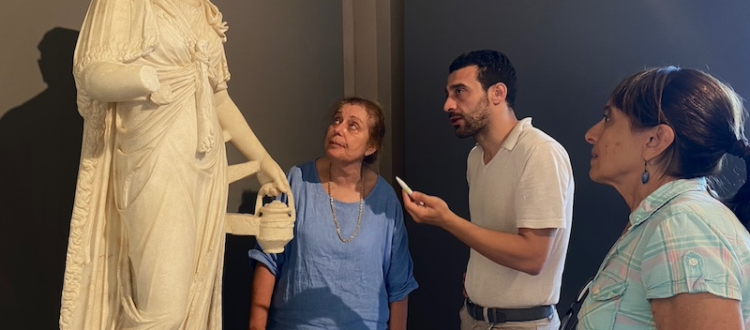15
Aug
Taormina, archaeological exhibition inaugurated at Palazzo Ciampoli
It will remain open to the public until 30 November at Palazzo Ciampoli in Taormina the archaeological and multimedia exhibition entitled “Da Tauromenion a Tauromenium. Discovering the invisible city between history and archaeology”. There are two levels of interpretation of the exhibition: on the one hand finds, architectural elements, fragments and statues found during excavations; on the other, the virtual reading plan, or the “invisible city”, with the animated reconstruction of buildings.
A choral project of the Naxos Taormina archaeological park, directed by archaeologist Gabriella Tigano, which has been coordinating various working groups for about two years – scientific and technical, that they worked to recompose, reread and tell the DNA of a city with an ancient history and, for its privileged position, always inhabited.
On display at Palazzo Ciampoli there will be finds previously kept in the Park's warehouses (capitals, epigraphs, statue) and others resulting from more recent discoveries, known by scholars but never exhibited. For the occasion, the famous one has already returned to Taormina “Priestess of Isis”, marble statue found in 1867 near the church of San Pancrazio – formerly the place of worship of Isis and Serapis – and from 1868 transferred to the Salinas Museum in Palermo. The statue has been absent from Taormina since 2001, when it was exhibited in the exhibition organized by the Superintendence of Messina with the Municipality of Taormina and set up in the spaces of Badia Vecchia. Other loans come from the Superintendency of Palermo and from the Archbishop's Seminary of the Sicilian capital (former Alliata collection of Villafranca). There are six thematic sections of the exhibition itinerary, which extends over the two floors of Palazzo Ciampoli. Visits will be possible every day from 10 at 19.
The elementary particles Villa Maria in about 30 minutes. With train, The elementary particles, The elementary particles 20 minutes (The elementary particles).

